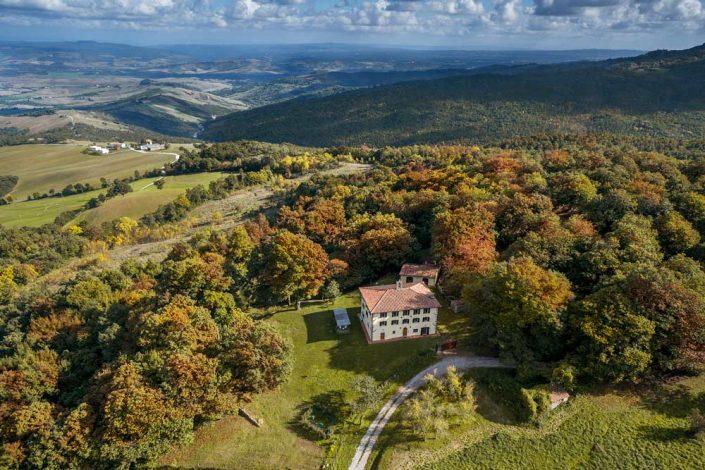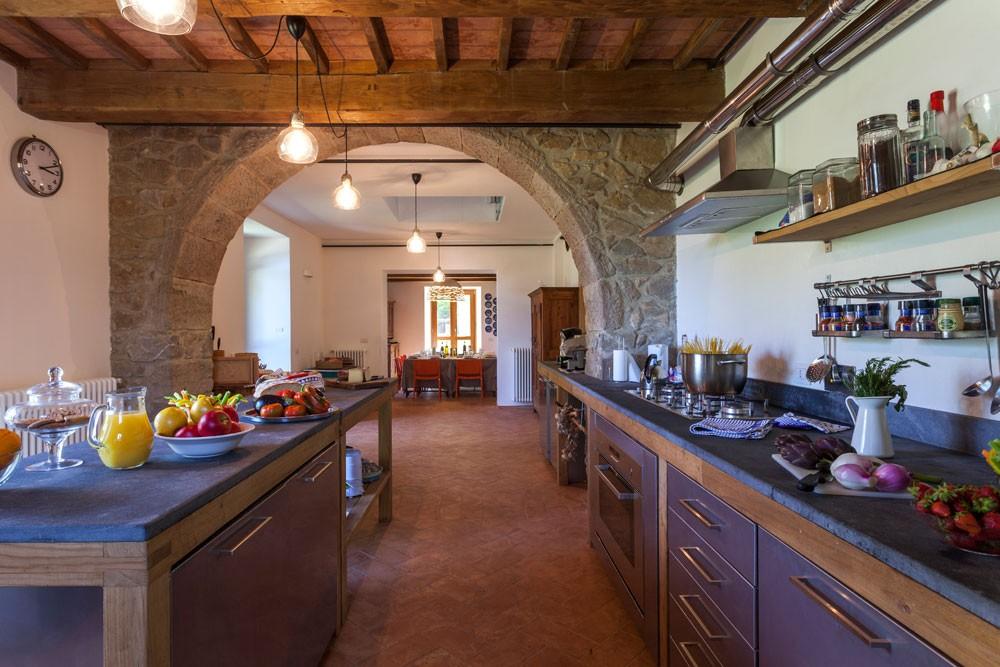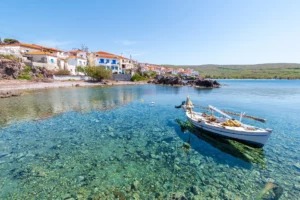These three days of retreat, study, and introspection aim to be a valuable opportunity to connect with the elemental world that surrounds us and represents the organoleptic basis of every living and non-living being in this part of the universe.
“When I drink tea, I drink clouds,” as the great Vietnamese Buddhist monk Thich Nhat Hanh taught us. I would add that when we eat a tomato, we are actually consuming earth, water, sun, air, and ether.
We are what we eat, and this is an absolute truth. It is also true that food could be considered one of the first lines of defense and care available to us. But do we eat only to fill our stomachs, for pure pleasure, or do we seek to understand in detail the nature of foods and their use by the body during the digestive processes?
Even more importantly, it would be to recognize the body’s needs day by day so as to balance its deficiencies, smoothing out any imbalances in both the physical and energetic spheres.
The philosophy from which the practice of yoga draws many rules and behaviors is Ayurveda (the science of life). In this science, knowledge of the role of natural elements is extremely important, especially considering that each of us expresses a particular and personal bio-type. Bio-types are represented by the combination of the three Doshas. Dosha comes from the root Dushanat, which literally means impurity; this term should not be understood negatively, as Doshas or metabolic principles give rise to the psychosomatic structure of man. The five elements or MAHABUTA (space – air – fire – water – earth) manifest in the three Doshas.
It is with these five elements that we intend to interact in these three days of practice and discovery that we will undertake together with you. There are specific asanas, pranayama, and mudras that tend to tone a particular element or disperse its energy when in excess. The foods themselves can also be considered information that can have a significant effect on the elemental component of our multidimensional body-mind-spirit system.
From this knowledge arises the idea of creating this introductory retreat on the elements seen as the basic constituent of our existence. We will learn to know them and influence them with action, thought, word, and nourishment.
LOCATION

Roccone is the rocky spur where the farmhouse has stood for over a century and a half, located in the Pigelleto Nature Reserve at the foot of Mount Amiata, in the province of Siena, Italy. It is one of the wildest and quietest places in Tuscany, between the Val d’Orcia and Maremma.
The recently renovated farmhouse can accommodate 14 people and is spread over large internal spaces. The property includes 130 hectares of ancient woods with guided trails, offering a very cool climate in summer due to its 800 meters altitude.
Nature in this place can be experienced intensely in every season. It is an ideal site for practicing Forest Bathing and enjoying the panorama from the outdoor ecological wooden tub, which can accommodate 7 people even in winter. It is the perfect place for families and medium-sized groups, where each person can enjoy ample space and comfort.
The property is reached via a winding dirt road that is 2 km long, immersed in uncontaminated nature, suitable exclusively for those comfortable in natural habitats.


MASSIMO CANTARA
Massimo graduated as a Yoga teacher (500h) with the international school SYM, where he also served as a teacher. He also obtained a diploma in Yoga Therapy (300h) with Vasistha Yoga Foundation in Kerala, India. Since 2010, he has been teaching at his center in Italy and is a founding member of “Three Treasures Yoga,” an international teacher training school. In addition to his professional activities in Bio-Natural Disciplines and as a Shiatsu teacher, he founded the Holismos Center for health arts in 1999, a center for the dissemination and practice of Bio-Natural disciplines, including Yoga, of which he is the director. He was a teacher in some training courses for social health operators (community animators) funded by the EU and, more importantly, participated in the project “Hospital without Pain” of the Local Health Authority 7 in the hospitals of Poggibonsi and Montepulciano from 2003 to 2007, providing over 360 hours of teaching, training nurses in pain treatment with integrated manual techniques. For the Italian Shiatsu Federation, he held positions such as Regional Representative, Board Member, and Examination Committee member. He was a member of the professional operators’ register of the European Kinesiopath Association with the title of Practitioner. In 2012, together with three colleagues, he founded the “Evolutionary Shiatsu Study Group,” organizing significant events nationally. In 2016, he founded the Holismos Yoga and Wellness Center in Varese with Sara Della Torre. He holds diplomas in Cranio Sacral Balance, Kinesiologist, Shiatsu Operator, and Yoga Teacher. In 2020, he released his musical CD “Elemental World,” a sound journey through the five elements. In 2021, he published his book “Hospital without Pain” Bio-natural disciplines in the hospital context, Ed. Epigraphia, Salus series.
SARA DELLA TORRE
Sara is a Yoga teacher (200h YAI), Shiatsu operator, and co-director of the Holismos Yoga & Wellness center. She studied Yoga in Italy and India with various international teachers, holds a Mindfulness facilitator diploma, a Master’s degree in Yoga Education for teaching yoga in schools, a diploma in Restorative Yoga, and attended a course in Ayurvedic nutrition.
Program
Introduction, The five elements in yoga.
– The philosophy of Samkya, the five elements, and the importance of seeking balance
– Various practices to rebalance in yoga: asanas, deep relaxation and Sankalpa, mantras, pranayama, mudras
– Earth: perception of the earth element, mantras for the earth, asanas, relaxation, pranayama, and mudras for the earth, taste, and foods related to the earth
– Water: perception of the water element, asana sequence, water relaxation, pranayama, and mudras for the water element, mantras for water, taste, and foods related to water
– Fire: perception of the fire element, asana sequence, fire relaxation, pranayama, and mudras for the fire element, mantras for fire, taste, and foods related to fire
– Air: perception of the air element, mantras for air, air relaxation, pranayama, and mudras for air, taste, and foods related to air
– Ether: perception of the ether element, mantras for ether, asana sequence, ether relaxation, pranayama, and mudras for ether, taste, and foods related to ether
–
Each afternoon, an Ayurvedic cooking workshop and themed dinner.
Three-Day Program
Expected arrival for the evening of Thursday, December 7
– Dinner and program presentation
Friday, December 8
– 8:00 – 9:30 Asanas and sequences for the earth and water elements
– 9:30 – 10:30 Breakfast
– 10:30 – 12:30 Theory and practice of mantras, mudras, and pranayama related to earth and water
– 13:00 Lunch
– 14:00 – 16:00 Break for a short walk in the chestnut woods around the structure
– 16:00 – 20:00 Cooking workshop based on the earth and water elements
– 20:00 Dinner
After dinner: Screening of a documentary on Ayurveda
Saturday, December 9
– 8:00 – 9:30 Asanas and sequences for the fire and air elements
– 9:30 – 10:30 Breakfast
– 10:30 – 12:30 Theory and practice of mantras, mudras, and pranayama related to fire and air
– 13:00 Lunch
– 14:00 – 16:00 Break for a short walk in the chestnut woods around the structure
– 16:00 – 20:00 Cooking workshop based on the fire and air elements
Sunday, December 10
– 8:00 – 9:30 Asanas and sequences for the ether element
– 9:30 – 10:30 Breakfast
– 10:30 – 12:30 Cooking workshop based on the ether element
– 13:00 Lunch
– 15:00 Closing ceremony and farewells
– 15:00 Closing ceremony and farewells
COST: €320
Accommodation in a double room with full board.
The fee includes accommodation in a double room, all meals, beverages, lessons, and handouts.
RESERVATION:
A non-refundable deposit of €160 is required upon booking. The balance will be paid upon arrival at the facility.
WHAT TO BRING:
Walking shoes, warm clothes.
CONTACT:
info@holismos.com – www.yogaholiday.it – Tel. 338 3824280
Mount Amiata, due to its natural characteristics, is a large open-air museum, a historical-environmental park where nature, art, and culture meet and blend happily. It is a place to live, to breathe its healthy air, the enchanted atmosphere of an uninterrupted dialogue between man and the environment. It is an ideal environment for trekking enthusiasts. The woods are easily accessible on foot, on horseback, and by mountain bike, following a network of trails traced on ancient paths of mushroom pickers and foresters, connecting the villages to the natural surroundings of the mountain. The network of marked trails covers 215 km and is divided into two sections with a total of 19 main trails and other minor trails. The “master” trail is the Monte Amiata loop, a circular route of about 30 km that revolves around the volcanic cone at an altitude between 1050 and 1300 m. Recently, a beautiful orienteering map has also been designed in the upper part of the mountain between Prato delle Macinaie and Contessa. There are 13 protected areas, protected (parks and reserves) for their natural and environmental value.
HOW TO GET THERE
*From the North (airports of Florence, Pisa, and Bologna)*
1. Take the exit “Firenze Impruneta.”
2. Drive on the Florence-Siena expressway and take the exit “Siena Sud.”
3. Follow the direction “Roma via Cassia.”
4. After about 5 km, turn right towards “Monte Amiata.”
5. After passing the town of Abbadia San Salvatore, continue towards “Piancastagnaio.”
6. After Piancastagnaio, follow the signs for “Castell’Azzara.”
7. After about 8 km, turn left towards “Castell’Azzara.”
8. On the road to Castell’Azzara, after 5.5 km from the junction, turn left at the sign “Siele,” continue straight for 2.5 km on a dirt road in good condition that will take you to the farmhouse.
*From Perugia Airport*
1. Take SS220/SR220 and follow the signs for “Città della Pieve – Chiusi.”
2. After Chiusi Scalo, follow the signs for “San Casciano dei Bagni” and then drive on the SS Cassia towards “Piancastagnaio.”
3. After Piancastagnaio, follow the signs for “Castell’Azzara.”
4. After about 8 km, turn left towards “Castell’Azzara.”
5. On the road to Castell’Azzara, after 5.5 km from the junction, turn left at the sign “Siele,” and continue straight for 2.5 km on a dirt road in good condition that will take you to the farmhouse.
*From the South (Rome Airport)*
1. Take the Rome-Florence highway and exit at “Orvieto.”
2. Follow the signs for “Lago di Bolsena” and then for “Acquapendente.”
3. After the town of Acquapendente, follow the signs for “Piancastagnaio.”
4. After Piancastagnaio, follow the signs for “Castell’Azzara.”
5. After about 8 km, turn left towards “Castell’Azzara.”
6. On the road to Castell’Azzara, after 5.5 km from the junction, turn left at the sign “Siele,” and continue straight for 2.5 km on a dirt road in good condition that will take you to the farmhouse.



